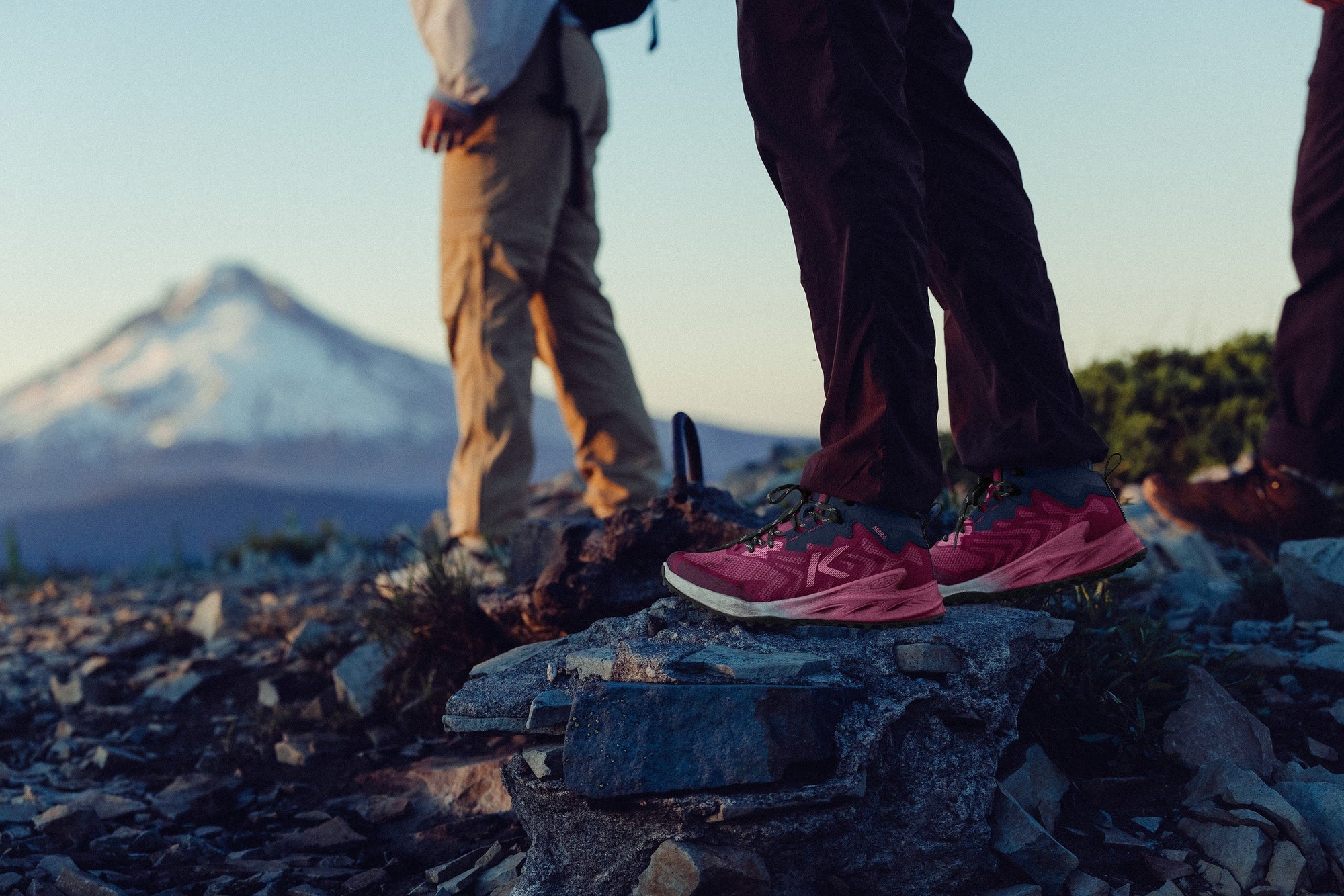While the rest of the country has been solidly in summer mode, those of us in the Pacific Northwest know that the unofficial first day of summer around here is July 4. After that, it’s on—and you can usually be guaranteed a frost-free evening at an Oregon campsite.
So, to celebrate and kick off the camping season, KEEN Kanteen chef David shared one of his favorite camp recipes, a bunch of cast iron skillets, and a ton of cooking know-how for an afternoon campfire cooking class in the KEEN headquarters parking lot.

The class was part of the KEEN Master Class series, a monthly peer-to-peer education program started by a former teacher, because, as she says: “There are a whole lot of extremely talented people working at KEEN, and I wanted these employees to have an opportunity to share their knowledge with their peers. I love the idea that this puts the teacher in the spotlight, and gives them some recognition and validation on what they bring to work every day.”
Class topics have ranged from winter and summer biking and emergency preparedness to Microsoft Outlook and how shoes are made. Each student receives a handmade button of completion (much like the Boy & Girl Scouts) for every class they complete. As an added bonus, the classes bring a mix of employees together in one room who may not normally work together, due to the natural “siloing” that occurs from being in separate departments and on multiple floors.


In the case of David’s Campfire Cooking class, participants also got to enjoy a yummy meal. Here are some of the key takeaways from David’s class, as he walked us through how to make chicken fajitas with fresh pico de gallo (recipe below!):
1. Bring a cast iron pan, metal tongs, and a potholder. These are David’s three must-haves on any car camping trip. Cast iron pans are practically indestructible, can be used on any heat source, and are extremely easy to clean. (If you don’t own one, check out the affordable, pre-seasoned pans from Lodge.) Metal tongs double as a way to carry a hot, heavy pan with both hands—for example, if you use your right hand to grab the pan handle with a potholder, you can use tongs with your left hand to grab the other side.

2. Think “convertible” cooking. When preparing your camp menu, think of dinner leftovers that can easily be tweaked for breakfast. For example, fajitas at night can easily turn into breakfast burritos in the morning by adding eggs.
3. Chop at home. David says he tries to do prep work at home, especially when potable water options at the campsite are limited or unknown.
4. Bring your favorite spices with you. Another pro tip from Chef David: Nalgene travel containers are great for transporting seasonings, salt, and sugar. He makes an all-around seasoning mix (see recipe below) that adds flavor to just about everything that goes on the fire.
5. Always cook on coals, for a fire that generates heat in the 350-550℉ range. David gets his campfire going for 1 to 1.5 hours until it’s down to coals. He says it’s good to try to get a sense of what those cooking temperatures feel like in your oven or grill at home so you can better gauge campfire temperatures.

READY TO START COOKING?
Chicken Fajitas
Yield: 4 servings
2 Chicken breasts
2 Bell peppers
½ Yellow onion
Smoked paprika, cumin, and salt
Small corn or flour tortillas
Cheese (pepper jack or your choice)
Season chicken breasts with smoked paprika, cumin, and salt (or the Blackening Seasoning below), and place directly on grill grate. Meanwhile, slice onion and peppers, and place in a preheated cast iron pan. Cook vegetables to desired tenderness. Cook chicken until juices are clear and internal temperature reaches 165℉. Let stand for 5 minutes before slicing and mixing into pan. Heat tortillas for a few seconds on each side. Serve with pico de gallo and your choice of cheese.
Pico de Gallo
Yield: 1 pint
5 Roma tomatoes
1 Jalapeno
1 Small red onion
1 Small bunch of cilantro
Juice of 2 limes
Salt (to taste)
Quarter the Roma tomatoes lengthwise, and remove the seeds and core, and then finely dice. Slice the onion lengthwise, peel, and finely dice. Slice jalapeno lengthwise, remove seeds, and finely dice or “bruinose.” Chop or “chiffonade” the cilantro (include tender parts of the stem). Combine all ingredients in a mixing bowl with lime juice, and add salt to taste.
Blackening Seasoning
Yield: 1 cup
1 tbsp. Colman’s Mustard Powder
2 tbsp. Paprika
1 tsp. Smoked paprika
1 tbsp. Onion powder
1 tbsp. Garlic powder
1 tsp. Dry oregano
1 tbsp. Kosher salt
1 tsp. Ground black pepper
½ tsp. Cayenne powder
When cooking at your campsite, and building a campfire, remember to practice Leave No Trace principles and be sure to properly extinguish your fire.













